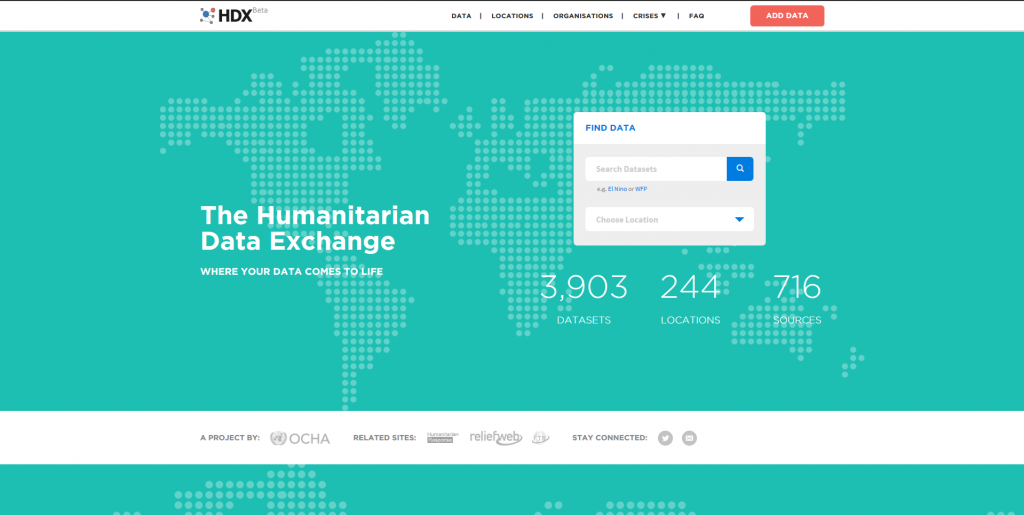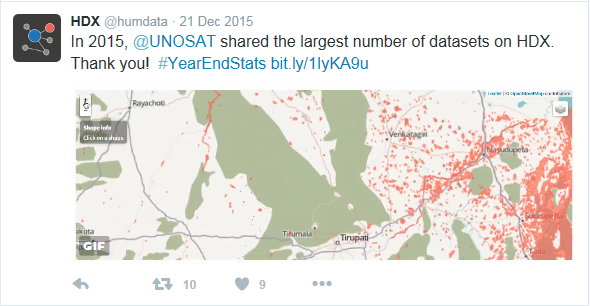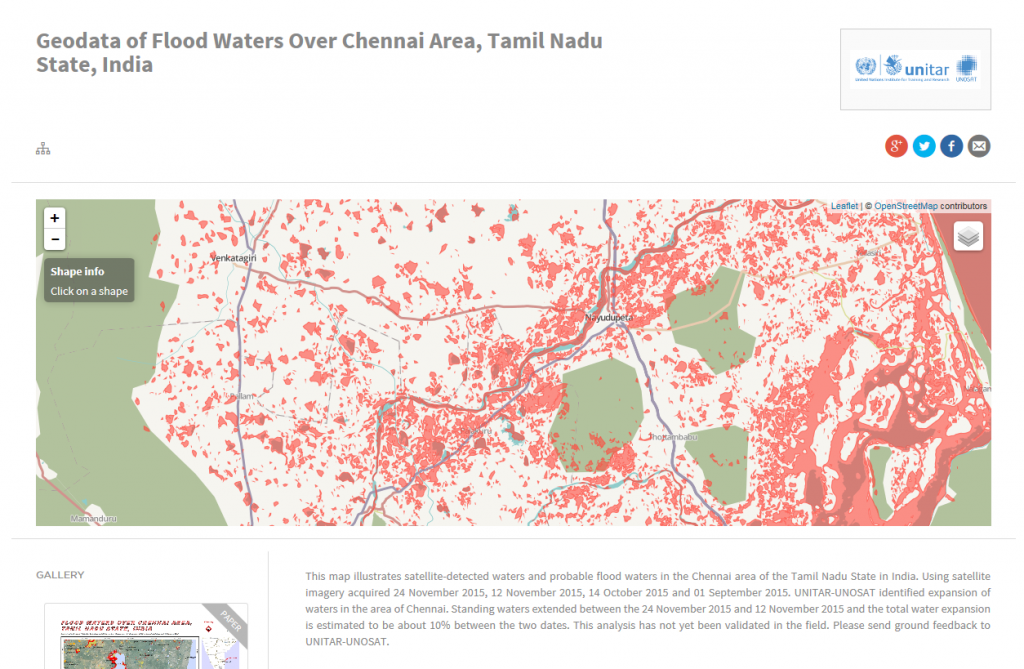Sharing Data Globally to Have an Impact Locally: How UNOSAT Works with Humanitarian Data Exchange
8 March 2016, Geneva, Switzerland – Almost everything on the internet is data. And everyone needs data. Humanitarian organizations need data more than anything else, in order to plan, to intervene in the right locations, to give their help to the people who most need it. The problem is… where do you find the data you need? The piece of data you need might be on the internet somewhere, but where, and what if it is not shared publicly?
This is a significant problem because humanitarian organizations don’t have the time for such searches. They don’t have the time to look for data when they don’t know where to look. They don’t have the time to reformat the data in order to use it. They don’t have the time to collect data or check the source. Emergency situations require immediate action.
 In order to solve this ironic problem (data is everywhere but not where, when and in the format you need it!), the United Nations Office for the Coordination of Humanitarian Affairs (OCHA) started a project some years ago called HDX – abbreviation for the Humanitarian Data Exchange. This is a website and its goal is to make data easy to find and use for analysis. That is, rather than looking through different document types (Excel, Word, PDFs …), create one source and one format for all the data. Some describe it as a humanitarian data-centric Wikipedia. In an email exchange with people at HDX, they highlighted that they “found it was hard to find data about humanitarian crises […] the source and quality was not clear. […] We think that making data accessible with clear sources and full metadata is very important as it increases re-use of the data by actors outside of the immediate crisis.”
In order to solve this ironic problem (data is everywhere but not where, when and in the format you need it!), the United Nations Office for the Coordination of Humanitarian Affairs (OCHA) started a project some years ago called HDX – abbreviation for the Humanitarian Data Exchange. This is a website and its goal is to make data easy to find and use for analysis. That is, rather than looking through different document types (Excel, Word, PDFs …), create one source and one format for all the data. Some describe it as a humanitarian data-centric Wikipedia. In an email exchange with people at HDX, they highlighted that they “found it was hard to find data about humanitarian crises […] the source and quality was not clear. […] We think that making data accessible with clear sources and full metadata is very important as it increases re-use of the data by actors outside of the immediate crisis.”
HDX staff approached UNITAR-UNOSAT about one year ago to see how we could work together because sharing data is exactly what we do: UNOSAT is a technology intensive program that delivers satellite imagery analysis of conflicts and disasters to international organizations (UN and non-UN) for humanitarian relief and coordination. Our goal is to make this information easily accessible to the UN family and to experts worldwide who work at reducing the impact of crises and disasters.
We share geodata1. When we release a pdf map, the data will be shared on HDX and this is all done via automatic scripts. We share data from our maps and from our flood portal.
Facts abour HDX as we write this article:
140'000 unique visitors since launch in July 2014
1/4 visitors download data
900'000 views of datasets on HDX
216 organizations registered
3900 public datasets
Since last year and according to HDX twitter account, we’ve been doing great!

It is of upmost importance for us to continue sharing our data easily and publicly as our work is meant to serve the humanitarian work. And we are very thankful for this easy-to-use platform OCHA created, as this gives us the means to extend the impact we can make out there. This is a good example of how technology can make a difference locally, where people need it!
Look at the picture below, this is the kind of information you can get from us and many other organizations that are sharing their data on HDX:

When asked about his work with UNOSAT, Javier Teran, Statistician at HDX, mentioned a long standing relationship between OCHA and UNOSAT and how we discussed a lot about the benefits of sharing datasets. He concluded: “even though there is a lot of technology that moves and transforms the data, the key ingredient to data sharing in the humanitarian community is trust between people”. That trust exists between OCHA and UNOSAT.
1 geodata is information about geographic locations that is stored in a format that can be used with a geographic information system (GIS)

